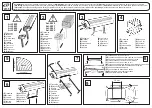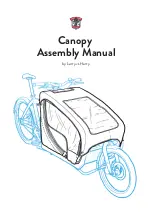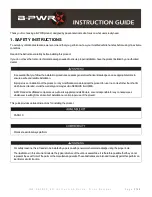
6/10/13 – 11
11
Regarding SRT and DdRT.
Single Rope Technique (SRT) and Doubled Rope Techniques (DdRT) are somewhat subjective terms that can mean
slightly different things to different people and different organizations. Other names for Single Rope Technique are
Static Rope Technique or Dynamic Rope Technique. SRT as referenced in these instructions simply refers to any
means or methods of ascending and descending a tree on a single leg of rope that does not move with the climber.
For more information on the meanings of these terms, refer to the following resources:
International Society of Arboriculture
: www.isa-arbor.com
Tree Care Industry Association
: www.tcia.org
On Rope
, by Bruce Smith and Allen Padgett (ISBN: 978-1-879961-05-0)
Best Practices for SRT in Arboriculture
, by Donald Coffey and Tchukki Andersen (TCIA publication)
Single Rope Technique
,
by Joe Harris (The Victorian Tree Industry Association)
http://vtio.org.au/Content/wp-content/uploads/2010/07/Single-Rope-Technique-i.pdf
Regarding Standards Testing.
ISC has carried out extensive testing with the Rope Wrench as a complete system in accordance with both European
CE (EN353-2) and American ANSI (Z359.1) Standards. Whereas for several reasons it is not possible to gain a
formal accreditation to either set of Standards, it is important to replicate 'real-life' use with a test method that is
consistent and repeatable using different but compatible component parts. Testing with the Rope Wrench, an
approved Sterling Rope Wrench Tether, an RP037 fixed cheek pulley connected to an ISC KH204 HMS carabiner, a
4-wrap Distel hitch using 28 inch Stein Copious hitch cord and industry standard 11mm-13mm rope (in these tests
the ropes used were supplied by Yale Cordage) the results (primarily measuring fall distance vs peak load) clearly
show that when used in a properly configured system the Rope Wrench is a product appropriate for the purpose of
SRT climbing.
International Safety Components
Unit 1, Plot 2
Llandygai Industrial Estate
Bangor, Gwynedd, UK
LL57 4YH
www.iscwales.com
[email protected]
Direct questions and concerns to ISC by telephone at +44 (0) 1248 363 110 or e-mail at [email protected].
Singing Tree Rope Tools LLC.,
33 East Parkhurst,
Detroit, Michigan, 48203
www.ropewrench.com
[email protected]





























